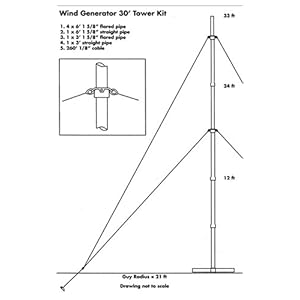 |
| Wind Power |
Wind Power is the conversion of
wind energy into a useful form of energy, such as using wind turbines to make electricity, wind mills for mechanical power, wind pumps for pumping water or drainage, or sails to propel ships.
At the end of 2009, worldwide nameplate capacity of wind-powered generators was 159.2 gigawatts (GW). (By June 2010 the capacity had risen to 175 GW.) Energy production was 340 TWh, which is about 2% of worldwide electricity usage; and has doubled in the past three years.
Several countries have achieved relatively high levels of wind power penetration, such as 20% of stationary electricity production in Denmark, 14% in Ireland[4] and Portugal, 11% in Spain, and 8% in Germany in 2009. As of May 2009, 80 countries around the world are using wind power on a commercial basis.
Large-scale wind farms are connected to the electric power transmission network; smaller facilities are used to provide electricity to isolated locations. Utility companies increasingly buy back surplus electricity produced by small domestic turbines. Wind energy, as an alternative to fossil fuels, is plentiful, renewable, widely distributed, clean, and produces no greenhouse gas emissions during operation. However, the construction of wind farms is not universally welcomed because of their visual impact but any effects on the environment are generally among the least problematic of any power source.
The intermittency of wind seldom creates problems when using wind power to supply a low proportion of total demand, but as the proportion rises, increased costs, a need to upgrade the grid, and a lowered ability to supplant conventional production may occur. Power management techniques such as exporting and importing power to neighboring areas or reducing demand when wind production is low, can mitigate these problems.
(From Wikipedia)




